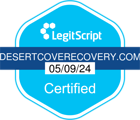Substance Use Disorder and Older Adults
Many people often associate heavy drinking and drug use with younger adults and teens. Surprisingly, substance use disorder and older adults is becoming more common in the United States.
In a SAMHSA survey, alcohol was the most common substance abused by people over the age of 50 and opioids were second on the list.[1] Additionally, the survey showed that since older people consumed at least 25% of the world’s prescription drugs, the prevalence of abuse of prescriptions could be more than 10% among older adults.
Perhaps, as a result of generational stereotyping or ageism, the topic of substance abuse and dependence is rarely associated with the elderly. Uncovering the reasons why the older generation is at risk could open the door to getting you or a loved on the treatment needed.
Contributing Risk Factors
There are many reasons why the elderly may suffer from substance use disorder. According to geriatric psychiatrist Susan Lehmann, one overall contributing factor is that baby boomers were young during an era when substance experimentation was common. Therefore, many may be more likely to turn to substances.[2]
The older generation also has a higher prevalence of pain medication prescriptions. It’s common for some specialists to prescribe opioids and benzodiazepines on a long-term basis. This kind of practice can lead to dependence as well as negative cognitive effects. Given the higher prevalence of comorbid medical problems, elderly patients are at greater risk for medical consequences associated with substance abuse.
Since the legalization of marijuana, its use has grown among older people – both medically and recreationally. This can be dangerous as it could contain uncertain additives that could impair judgment. Marijuana use can also negatively impact an older person’s cardiovascular system thus increasing the chance of a heart attack.
Older people may start drinking or consuming substances out of boredom after retirement. Now that life has slowed down, they have more time to relax and mingle with others. This can open the doors to more frequent drinking just to help pass the time and socialize.
Mental illness is another contributing factor to substance use disorder and older adults. Approximately 25% of elderly people also suffer from comorbid depression. Cognitive disorders and anxiety disorders, both of which occur in 10% to 15% of elderly patients are also common.[1]
Any major changes to life or health can contribute to a substance use disorder. There may be complicating issues as well, such as the death of a spouse or a loved one. These changes may also lead to depression in older adults.[3]
Continued after infographic:
Common Signs of a Substance Use Disorder
It may be difficult to admit when you have a problem. If you worry about a loved one, it may seem hard to find a way to bring up the issue. According to the Mayo Clinic, there are several important signs to watch for.[4] These are some of the most common signs:
- Feeling the need to consume the substance every day
- Experiencing urges for the substance that cloud other thoughts
- Needing more of the substance to feel the same effect
- Taking the substance longer than intended
- Not being able to meet work or social obligations
- Feeling a reduced interest in daily activities or socializing
- Continuing use even though the substance causes problems
- Failing at any attempts to stop using the substance
- Feelings of withdrawal and trying to avoid those feelings by taking more
- Spending a lot of time recovering from the substance’s effects, using it or getting it
Depending on the type of substance, there may be other signs as well. If you notice that a substance changes your life or psychological wellbeing, it is time to reach out for help.
Alternate Solutions
If you find yourself taking more of your prescriptions or consuming more alcohol out of boredom, there are other solutions. One of the reasons why people crave drugs or alcohol is because of the rewarding feeling. There are other ways to achieve a rewarding feeling such as:
- Adopt a pet from a shelter if you are able and willing.
- Volunteer at a hospital, charity or animal shelter.
- Plan to work out or gather with friends more often, and try to find ways to help them.
Helping others and giving can make the brain produce oxytocin, dopamine, and serotonin.[5] These make up the “happiness trifecta” of neurochemicals. A new and productive hobby may also help.
If you find yourself drinking too much out of boredom, try limiting your drinks and getting out more. The American Geriatrics Society recommends no more than seven alcoholic drinks per week for older adults.[6] If you cannot limit your drinking or stop taking too much of an addictive prescription medication, professional treatment can help.
Substance Use Disorder and Older Adults: How Treatment Helps
Desert Cove Recovery holds the key to beating an addiction permanently. If you want to live a happier and healthier life, reaching out for help is the first step. We give you a place to safely detox under the care of medical professionals. While detoxing removes the substance from your system, there are other steps to recovery that are essential as well. Desert Cove Recovery offers counseling, a 12-Step program, customized therapy, and combined therapies to help you attain sobriety.
We have several specific programs for treating drug and alcohol addictions. We treat all problems, including depression or other issues that coexist with the addiction. With our support and strategies, you have the power to break the cycle for good.
Contact the staff at Desert Cove Recovery today us to learn more.
Sources:
[1] https://www.psychiatrictimes.com/geriatric-psychiatry/substance-abuse-aging-and-elderly-adults [2] https://www.hopkinsmedicine.org/news/articles/substance-use-disorders-in-older-adults-a-growing-threat [3] https://www.nia.nih.gov/health/depression-and-older-adults [4] https://www.mayoclinic.org/diseases-conditions/drug-addiction/symptoms-causes/syc-20365112 [5] https://www.psychologytoday.com/us/blog/vitality/201404/the-neuroscience-giving [6] https://www.ncbi.nlm.nih.gov/pmc/articles/PMC4146436/



